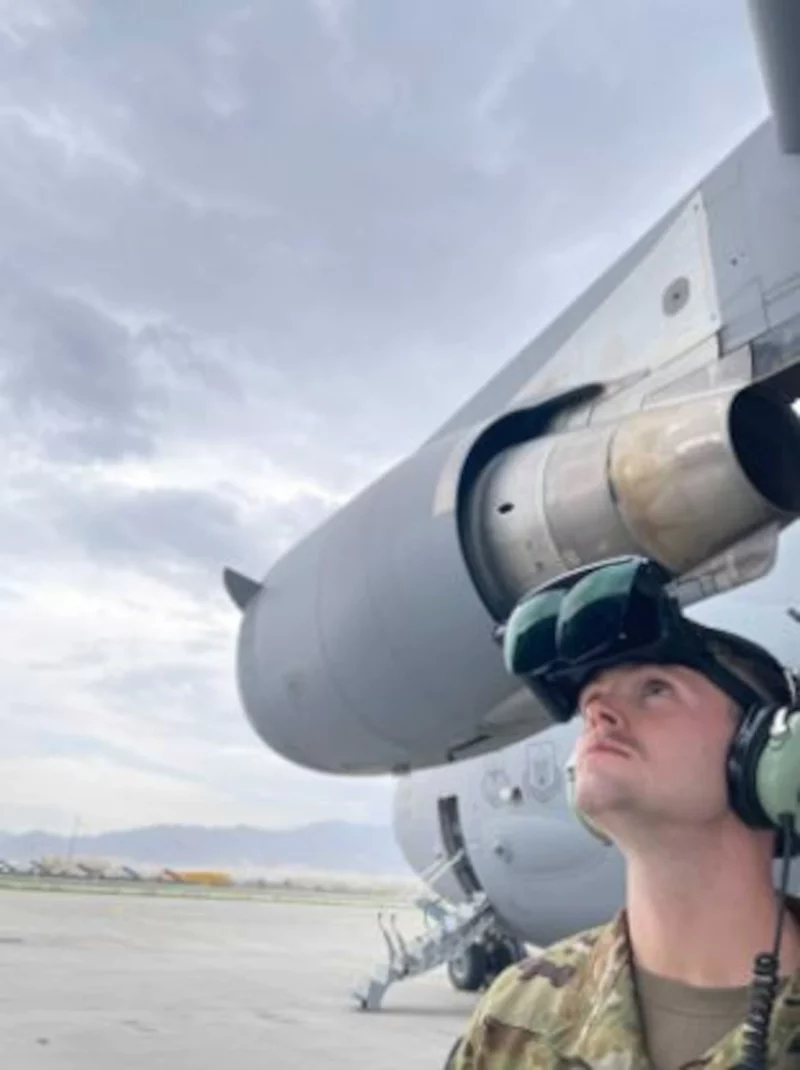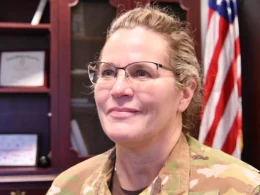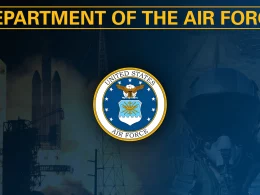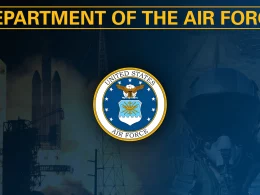TRAVIS AIR FORCE BASE, Calif. – Maintainers at Travis Air Force Base, California, may soon be able to communicate directly with home base subject matter experts anywhere in the world while tackling maintenance issues thanks to an augmented reality headset procured by Mira in partnership with Travis AFB’s Phoenix Spark cell.
Mira, a Los Angeles-based AR company, described their new Prism Pro headset as a technology akin to a familiar voice in popular culture.
“If you’ve ever seen Iron Man, you’ve seen Tony Stark’s on-board artificial intelligence, Jarvis, deliver critical information at just the right time,” said Esteban Castellanos, Mira’s Department of Defense program manager. “The Prism Pro headset functions in much the same way by empowering remote access to SMEs, shrinking the knowledge gap between deployed Airmen and their leadership back at home.”
The technology allows Airmen to access expert knowledge, receive collaborative remote troubleshooting help and reference technical order guidance through interactive workflow tools, all through a heads-up and hands-free AR headset. Additionally, an AR hardware and software solution reduces the need for travel via remote audits or remote engineering dispositions, with the potential to eliminate it altogether.
The Mira contract comes as a result of the Air Force’s Small Business Innovation Research contracts that aim to seed the growth of small businesses and assist development of technology with the potential for dual-use application in both civilian and military use-cases.
Maj. Eric Robinson, Phoenix Spark director, lauded the contracts in aiding the larger Air Force mission of accelerating change.
“A big part of what we do at Phoenix Spark is leverage our partnerships in the private sector to give solutions to the warfighter, give back time and save money,” he said. “The SBIR contracts help us to do exactly that.”
For Robinson and deputy Phoenix Spark chief, Capt. Zach McColgan, the partnership with Mira represents a jumping-off point from which they hope to see additional involvement from Airmen on base.
“We’re really here to help solve problems,” McColgan said. “Whether it’s through educating Airmen on how to utilize SBIR to address their pain points or teaching them how to 3D print and code, innovation doesn’t happen within a vacuum—it’s something we all need to come to the table for.”
It was in that same spirit that two individuals saw the needs of the Air Force and helped broker the partnership that would eventually lead to the use of the Prism Pro headset for DoD service members: Capt. Ryan “Wes” Williams, Phoenix Spark officer, and Staff Sgt. Brian Duquette, 60th Contracting Squadron operations acquisition flight team lead.
The Mira partnership would not have materialized without the heavy-lifting from not only Williams and Duquette, but all the contracting personnel responsible for reviewing the technology and leveraging their unique skillsets to meet problems facing the Air Force head-on, said Castellanos.
In a visit last year to Travis AFB, U.S. Transportation commander, Gen. Jacqueline Van Ovost, then-commander of Air Mobility Command, foot-stomped the importance of organizations like Phoenix Spark and their ability to embolden Airmen to seek out and secure partnerships like with Mira.
“We’ve come so far in allowing Airmen to innovate and think about the future,” Van Ovost said. “That’s evident in Travis’ Phoenix Spark cell. What Travis has there is amazing, and it’s not only four or five Airmen there—it’s a total force team helping each other achieve great things. Travis proves that if you empower your Airmen, and give them the time to think about how to better accomplish the mission, they want to do that; they want to use their unique talents to make things better.”
Castellanos remarked on the ease of the SBIR process, both to the Airmen wishing to partner with small companies and the companies’ economy of movement in solving problems.
“Technology should fit the needs of the user, not the other way around,” he said. “Airmen don’t often find out about potential technological advances until the tech is issued to them. They’re expected to ‘back-into’ the tech and adapt to it, somehow. SBIR contracts, however, allow Airmen to be a part of that process by bringing companies out and talking through a proposal with them. It puts Airmen in a position of having technology adapt to them.”
For more information on how to get involved with Phoenix Spark, visit their website at www.travisspark.com.
To input your own thoughts on the Prism Pro headset, visit the VISION website.









